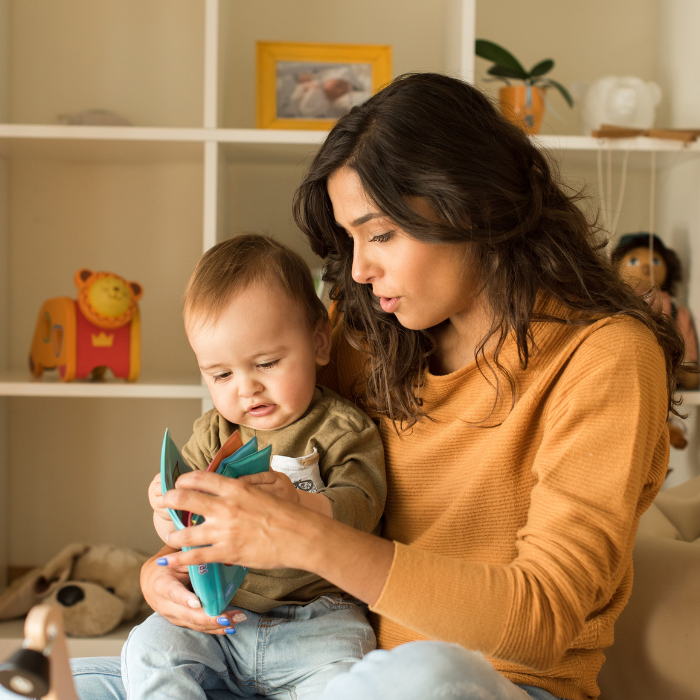
For many kids, the path to literacy isn’t smooth sailing. Here are some ways your school should be able to help, and some fun things you can do at home.
building blocks
The normal journey into literacy starts with the alphabet. Even before your child reaches school, their early childhood education centre will show them the letter shapes and explain the sound they produce, for example, “sssss like snake”.
At school comes joining the letters together, or blending: “Listen carefully, what word am I making: d-o-g?” With repetition, more and more students will start hearing “dog”. Children are also taught to sound out words that are written down: “Look, here is a word with the letter ‘r’ at the beginning and the letter ‘t’ at the end, what might it be? Rat? Yes, well done! And this word looks similar, but it starts with an ‘m’ instead, what do you think it is?”
The children then get a list of most commonly used words, such as the, and, it, of, are. Once they master those, they learn how to make new words. For example, add an ‘s’ at the beginning of the word to get the word sand.
When a Kiwi kid turns 6, they get their 6-year-old Net Test to check whether they can recognise all 26 letters, read the first 15 high-frequency words, write from dictation and read a selected text. This test is the first point at which the school will identify those who need extra help with their reading.
reading recovery
The Ministry of Education defines the Reading Recovery programme as: “A school-based early literacy intervention which provides skilled one-to-one teaching for children who have made slow progress with literacy learning in the first year of school.” Because it has to be run by a teacher trained in Reading Recovery, there is a limit to how many pupils each school can include in the programme. In practice, this means only 4 or 8 children in the entire school might get access to this extra level of help.
guided reading
What happens to those who are below National Standard expectations, yet don’t have access to Reading Recovery? The class teacher takes them in groups for intense reading sessions, employing all the Jolly Phonics building blocks, flash cards and multi-sensory learning.
Guided reading often starts with non-alphabetic cues. The teacher encourages the group to look at the cover and guess what the book is about. They page through the book, examine the illustrations and speculate as to the content – this lends a framework to the text. Throughout the discussion, the teacher tries to introduce the words found in the book to fill out the framework.
repeated reading
An interesting approach to reading that has produced positive results is Repeated Reading. It involves allowing the student to read the same text in several consecutive sessions. During the first session, the text will be new, necessitating a fair bit of deciphering, but in the second session the text will be familiar, and eventually the student will be able to read it fluently. This method boosts the child’s confidence in their own ability.
buddy reading
Buddy Reading is an opportunity for weaker readers to pair up with stronger readers for fun reading sessions. Typically, the buddies would be a few years older, for example Year 1 students might team up with buddies from Year 5 or Year 6.
teacher aides
Teacher Aides (staff or volunteers) sit alongside a child in class and listen to them read one-on-one, guiding them along if necessary.
‘steps’
‘Steps’ is a multi-sensory research-based literacy computer programme designed to support and improve learning, both in the classroom and at home.
2-way street
Education doesn’t happen exclusively in the classroom.
Talk to the teacher regularly (fortnightly) about your child’s progress and remember to ask what you can do at home to support the class learning.
homework
A word of advice from a Year 2 teacher: “At home, you can supplement your child’s learning using this motto: read by, read to, read with. Let your child read out something, that’s the read by part. Read a piece of text to your child. And then read another bit together. Do it every night and see the results.”
The key message is: make reading fun. Lead by example and let your children see you relax with a book or magazine, tell them about the books you loved when you were their age, ask for books for Mother’s Day, read as a family, listen to audio books in the car, read the Harry Potter books before you see the movies.
the final goal
The objective is for children to read smoothly and with comprehension. They need to learn to read in order to be able to read to learn. Ideally, they will also discover reading for the pure pleasure of it.
fun home activities
- Watch Word World – this TV programme really demonstrates how letters build words.
- Play I spy. This introduces the children to the concept of sounding out words.
- Read car number plates, signs at the shops, newspaper headings, the shopping list.
- Write little notes and hide them in the lunch box.
- Play treasure hunts with simple written clues.
- Play text-based computer games.
- Use read-along books: play the CD and let the child follow the text in the book.
how difficult should your child’s book be?
- If a book is too hard, your child will get frustrated and won’t want to read. A book that’s too easy will be boring. Get to know your child’s reading level, as well as the type of books that appeal to them: comics, non-fiction, mysteries, fantasy.
- The best way to grow as a reader is by reading books challenging enough to keep the child’s interest (typically a handful of new words per session) but manageable enough to constantly increase their confidence. If they make more than 4-5 errors per minute of loud reading, the book is too hard.
- The best way to learn to love reading is to read for pleasure at the level at which the child is totally fluent. Practising smooth reading is an important aspect of the journey.
“the best way to learn to love reading is to read for pleasure at the level at which the child is totally fluent”
Yvonne Eve Walus is an education specialist, a senior consultant to Creative Learning Systems in Auckland, and a mother of two children.








